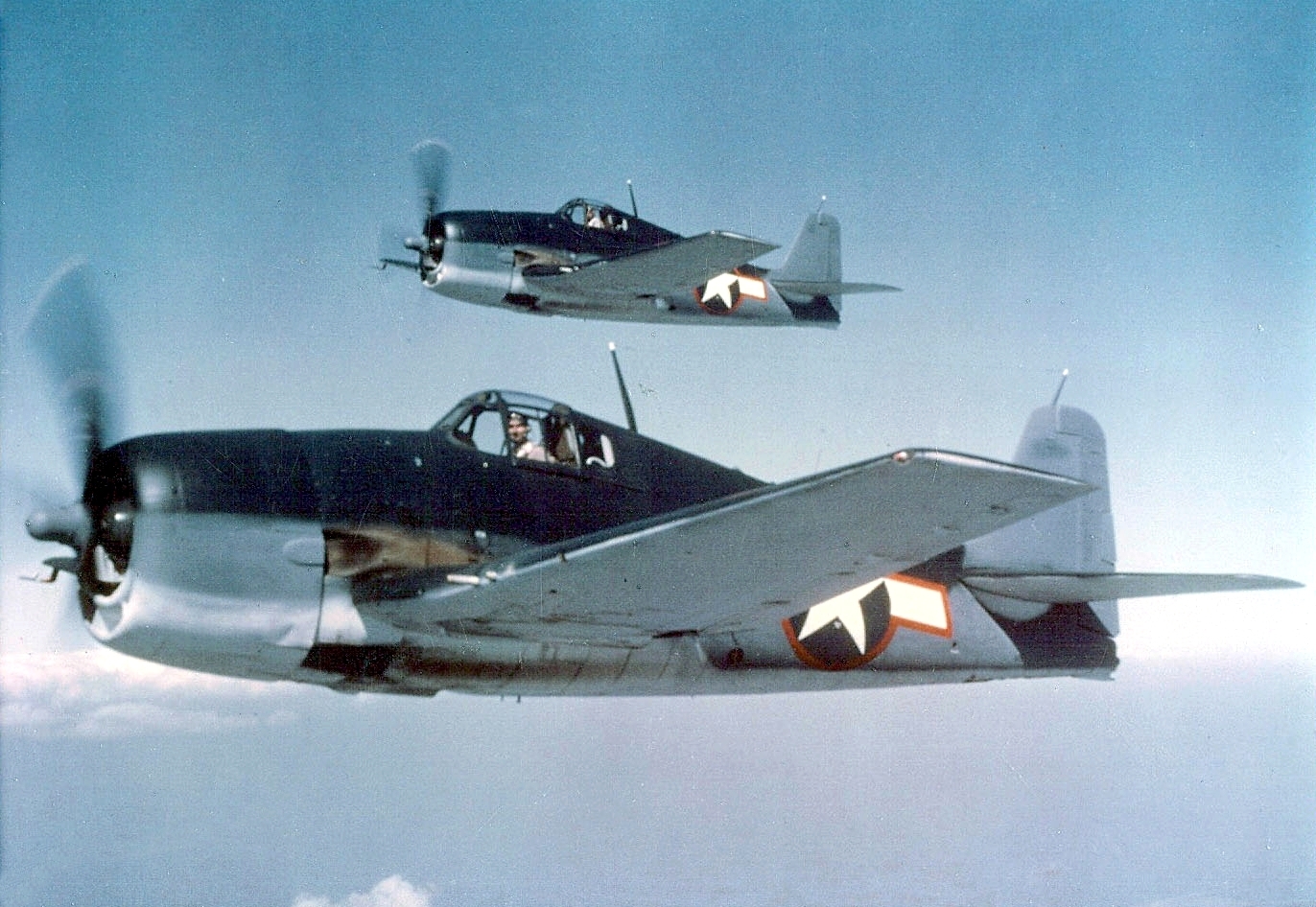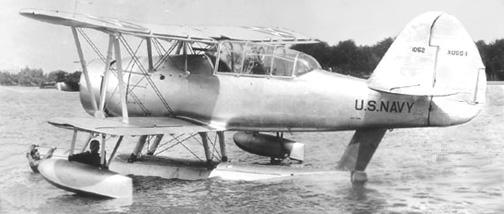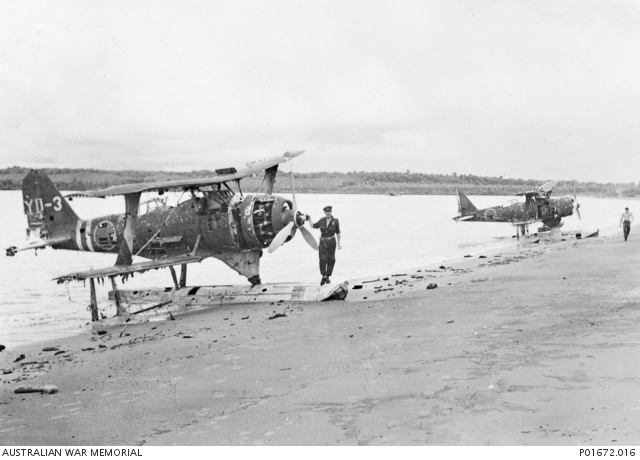|
Naval Aircraft Factory XOSN
The Naval Aircraft Factory XOSN was an American biplane observation floatplane developed by the Naval Aircraft Factory for the United States Navy during the late 1930s. Design and development In 1936, the Navy asked all interested aircraft manufacturers to submit bids for a new observation-scout aircraft, capable of operating from either water or land, but primarily intended for service on battleships and cruisers for gunnery spotting. Three companies – Stearman Aircraft, Vought and the Naval Aircraft Factory - submitted aircraft to meet the requirements. The Naval Aircraft Factory design, assigned the designation XOSN-1, was a two-seat biplane of mixed metal and fabric construction, with the pilot and observer seated in tandem in a fully enclosed cockpit. Innovations included automatic leading-edge slats on the upper wing and an I-strut bracing system that eliminated the need for interplane bracing wires. Provisions were made for either float or wheeled landing gear of a conve ... [...More Info...] [...Related Items...] OR: [Wikipedia] [Google] [Baidu] |
Naval Aircraft Factory
The Naval Aircraft Factory (NAF) was established by the United States Navy in 1918 in Philadelphia, Pennsylvania. It was created to help solve aircraft supply issues which faced the Navy Department upon the entry of the U.S. into World War I. The US Army’s requirements for an enormous quantity of airplanes created a decided lack of interest among aircraft manufacturers in the Navy's requirements for a comparatively small quantity of aircraft. The Navy Department concluded that it was necessary to build a Navy-owned aircraft factory in order to assure a part of its aircraft supply; to obtain cost data for the department’s guidance in its dealings with private manufacturers; and to have under its own control a factory capable of producing experimental designs. History On 27 July 1917, Secretary of the Navy Josephus Daniels approved the construction of the Naval Aircraft Factory, as a means for the government to promote industry efficiency, ensure engineering expertise, and ... [...More Info...] [...Related Items...] OR: [Wikipedia] [Google] [Baidu] |
Beriev Be-2
The Beriev Be-2 (originally designated KOR-1) was a two-seat reconnaissance seaplane built for the Soviet Navy shortly before World War II. It was designed to replace the Navy's obsolete license-produced Heinkel He 55 aircraft operating from warships and shore bases. Design and development The Be-2 was an all-metal biplane floatplane, with two open cockpits in tandem for the pilot and observer. The wings were braced, but designed to be folded back for storage on a warship. The float arrangement consisted of a large central float, with two smaller floats on the wings. The Be-2 was powered by a Shvetsov M-25 radial 9-cylinder air-cooled engine (a copy of the American Wright R-1820) with a rating of . From the outset, Be-2 design exhibited serious handling difficulties and maintenance problems. However, due to the lack of a suitable alternative, the design was placed into production. A total of around 12 serial aircraft were produced. By June 1941, six KOR-1 were in the Baltic, fi ... [...More Info...] [...Related Items...] OR: [Wikipedia] [Google] [Baidu] |
Floatplanes
A floatplane is a type of seaplane with one or more slender floats mounted under the fuselage to provide buoyancy. By contrast, a flying boat uses its fuselage for buoyancy. Either type of seaplane may also have landing gear suitable for land, making the vehicle an amphibious aircraft. British usage is to call "floatplanes" "seaplanes" rather than use the term "seaplane" to refer to both floatplanes and flying boats. Use Since World War II and the advent of helicopters, advanced aircraft carriers and land-based aircraft, military seaplanes have stopped being used. This, coupled with the increased availability of civilian airstrips, have greatly reduced the number of flying boats being built. However, numerous modern civilian aircraft have floatplane variants, most of these are offered as third-party modifications under a supplemental type certificate (STC), although there are several aircraft manufacturers that build floatplanes from scratch. These floatplanes have found thei ... [...More Info...] [...Related Items...] OR: [Wikipedia] [Google] [Baidu] |
Biplanes
A biplane is a fixed-wing aircraft with two main wings stacked one above the other. The first powered, controlled aeroplane to fly, the Wright Flyer, used a biplane wing arrangement, as did many aircraft in the early years of aviation. While a biplane wing structure has a structural advantage over a monoplane, it produces more drag than a monoplane wing. Improved structural techniques, better materials and higher speeds made the biplane configuration obsolete for most purposes by the late 1930s. Biplanes offer several advantages over conventional cantilever monoplane designs: they permit lighter wing structures, low wing loading and smaller span for a given wing area. However, interference between the airflow over each wing increases drag substantially, and biplanes generally need extensive bracing, which causes additional drag. Biplanes are distinguished from tandem wing arrangements, where the wings are placed forward and aft, instead of above and below. The term is also o ... [...More Info...] [...Related Items...] OR: [Wikipedia] [Google] [Baidu] |
1930s United States Military Reconnaissance Aircraft
Year 193 ( CXCIII) was a common year starting on Monday (link will display the full calendar) of the Julian calendar. At the time, it was known as the Year of the Consulship of Sosius and Ericius (or, less frequently, year 946 ''Ab urbe condita''). The denomination 193 for this year has been used since the early medieval period, when the Anno Domini calendar era became the prevalent method in Europe for naming years. Events By place Roman Empire * January 1 – Year of the Five Emperors: The Roman Senate chooses Publius Helvius Pertinax, against his will, to succeed the late Commodus as Emperor. Pertinax is forced to reorganize the handling of finances, which were wrecked under Commodus, to reestablish discipline in the Roman army, and to suspend the food programs established by Trajan, provoking the ire of the Praetorian Guard. * March 28 – Pertinax is assassinated by members of the Praetorian Guard, who storm the imperial palace. The Empire is auctioned off ... [...More Info...] [...Related Items...] OR: [Wikipedia] [Google] [Baidu] |
List Of Flying Boats And Floatplanes
The following is a list of seaplanes, which includes floatplanes and flying boats. A seaplane is any airplane that has the capability of landing and taking off from water, while an amphibian is a seaplane which can also operate from land. (They do not include rotorcraft, or ground-effect vehicles which can only skim along close to the water) A flying boat relies on its main hull for buoyancy, while a floatplane has a conventional aircraft fuselage fitted with external floats. In some locales, the term "seaplane" is used as a synonym for floatplane. List A small number of seaplanes have retractable beaching gear, which is not capable of being used for landings and takeoffs, but these remain flying boats or floatplanes and are not amphibians. Many floatplanes, especially those since 1945, can have either conventional floats for operating just from water, or amphibious floats, which have retractable undercarriage built into them. Some experimental flying boats have used skis o ... [...More Info...] [...Related Items...] OR: [Wikipedia] [Google] [Baidu] |
List Of United States Navy Aircraft Designations (pre-1962)
This list of United States Navy aircraft designations (pre-1962) includes prototype, pre-production and operational type designations under the 1922 United States Navy aircraft designation system, which was used by the United States Navy, the United States Marine Corps, and the United States Coast Guard. The list also includes airships, which were designated under different systems than fixed-wing aircraft and rotorcraft until 1954, and naval aircraft that received designations under the 1911 and 1914 U.S. Navy systems, which were sequential by manufacturer and/or aircraft class, and did not convey information about the aircraft's mission. For aircraft designations under the U.S. Army Air Force/U.S. Air Force system or the post-1962 Tri-Service system—which includes U.S. Navy, Marine Corps and Coast Guard aircraft currently in service—see List of military aircraft of the United States. For Navy, Marine Corps and Coast Guard aircraft that did not receive formal designations� ... [...More Info...] [...Related Items...] OR: [Wikipedia] [Google] [Baidu] |
Vought O5U
__NOTOC__ The Vought O5U was a 1930s prototype American observation floatplane to meet a United States Navy requirement for a catapult launched scouting aircraft. The contract was won by Curtiss who went on to produce the SOC Seagull; only one O5U was built. Development The United States Navy contracted three companies to produce prototypes to meet a requirement for a catapult launched biplane, with a central float and folding wings. Douglas produced the XO2D-1, Curtiss the XO3C-1 and Vought the XO5U-1. The XO5U-1 ( serial number ''9399'') was powered by a single Pratt & Whitney R-1340-12 piston engineAndrade 1979, p. 205 and first flew on the 8 May 1934. The contract was awarded to Curtiss and only one XO5U-1 was built. The Status of Naval Aircraft, dated June 1937, listed the XO5U-1 as assigned at Mustin Field at the Naval Aircraft Factory, Philadelphia Philadelphia, often called Philly, is the List of municipalities in Pennsylvania#Municipalities, largest city in t ... [...More Info...] [...Related Items...] OR: [Wikipedia] [Google] [Baidu] |
Stearman XOSS
The Stearman XOSS was an American biplane observation floatplane developed by Stearman Aircraft for the United States Navy during the late 1930s. Intended to replace the Curtiss SOC Seagull in service aboard battleships, it proved inferior to the Vought OS2U Kingfisher in a fly-off, and did not enter production. Design and development Known by the company designation Model X-85,Phillips 2006, p.148. the Stearman XOSS-1 was designed during 1937 in response to a U.S. Navy specification calling for an observation-scout type aircraft, capable of operating from either water or land, and stressed for catapult launching from battleships and cruisers.Adcock 1991, p.4. The new aircraft was intended to replace the Curtiss SOC as the standard observation and gunnery spotting aircraft in service aboard the Navy's battleships. In response to the request for proposals, the Navy received designs from Stearman Aircraft, Chance Vought, and the Naval Aircraft Factory. The Stearman Model 85, g ... [...More Info...] [...Related Items...] OR: [Wikipedia] [Google] [Baidu] |
Mitsubishi F1M
The Mitsubishi F1M ( Allied reporting name "Pete") was a Japanese reconnaissance floatplane of World War II. It was the last biplane type of the Imperial Japanese Navy, with 944 built between 1936 and 1944. The Navy designation was "Type Zero Observation Seaplane" (零式水上観測機). Design and development In 1934, the Imperial Japanese Navy issued a specification to Mitsubishi, Aichi and Kawanishi for a replacement for its Nakajima E8N floatplanes, which were used for short-ranged reconnaissance and observation missions from the Navy's warships.Francillon 1970, p. 358. Mitsubishi's design, the Ka-17, given the short system designation F1M1 by the Japanese Navy, was a small all-metal biplane powered by a single Nakajima Hikari 1 radial engine rated at , the same engine as used by Aichi's competing F1A. It had elliptical wings and great care had been taken to reduce drag, with the number of interplane struts and bracing wires minimised. The first of four F1M1s flew in June 1 ... [...More Info...] [...Related Items...] OR: [Wikipedia] [Google] [Baidu] |
Fairey Seafox
The Fairey Seafox was a 1930s British reconnaissance floatplane designed and built by Fairey for the Fleet Air Arm. It was designed to be catapulted from the deck of a light cruiser and served in the Second World War. Sixty-six were built, with two finished without floats and used as landplanes. Design and development The Fairey Seafox was built to satisfy Air Ministry Specification S.11/32 for a two-seat spotter-reconnaissance floatplane. The first of two prototypes appeared in 1936, first flying on 27 May 1936,Taylor 1974, p.285. and the first of the 64 production aircraft were delivered in 1937.Taylor 1974, p.287. The flights were organised as 700 Naval Air Squadron of the Fleet Air Arm. The fuselage was of all-metal monocoque construction, the wings being covered with metal on the leading edge, otherwise fabric. It was powered by a 16-cylinder 395 hp (295 kW) air-cooled Napier Rapier H engine. It cruised at 106 mph (171 km/h), and had a range of 440 ... [...More Info...] [...Related Items...] OR: [Wikipedia] [Google] [Baidu] |

.jpg)
.jpg)




